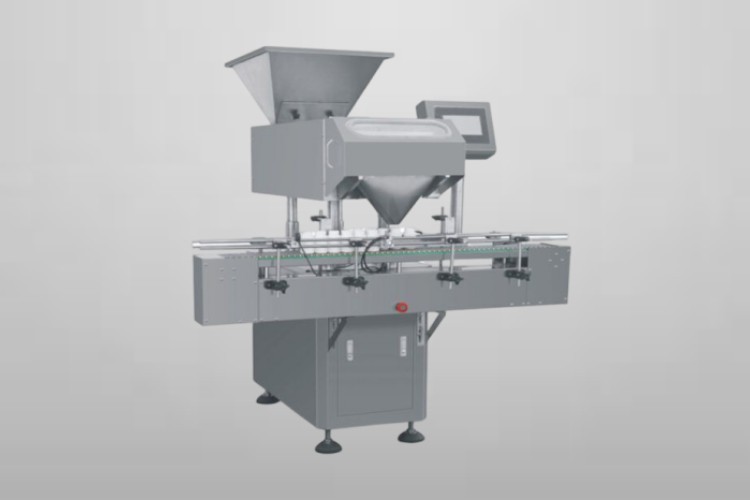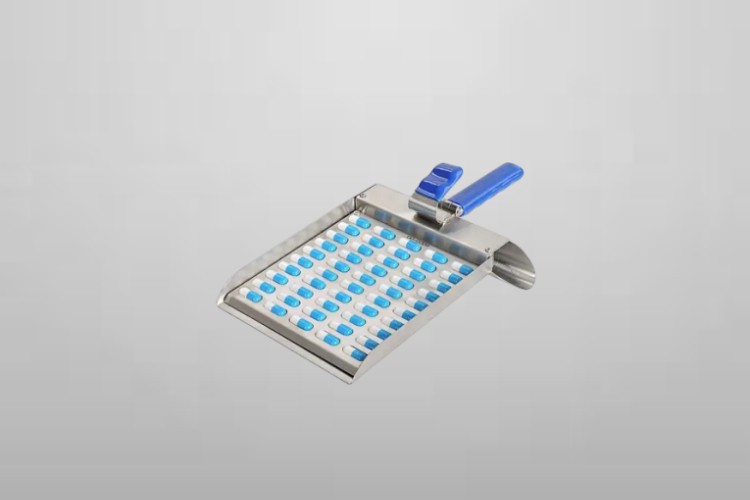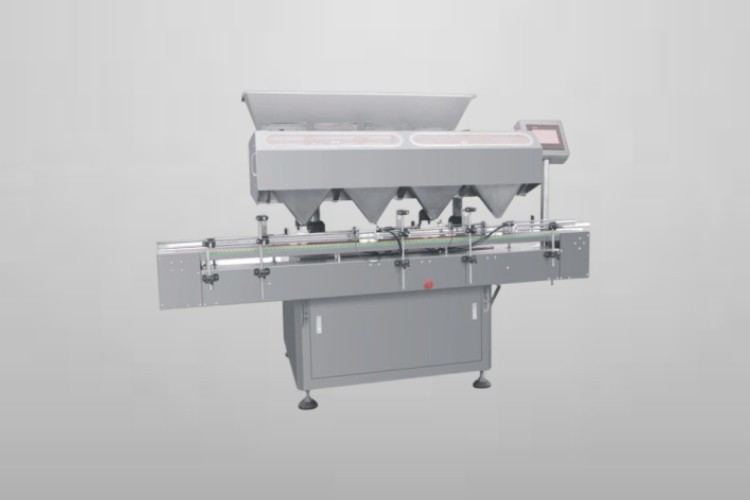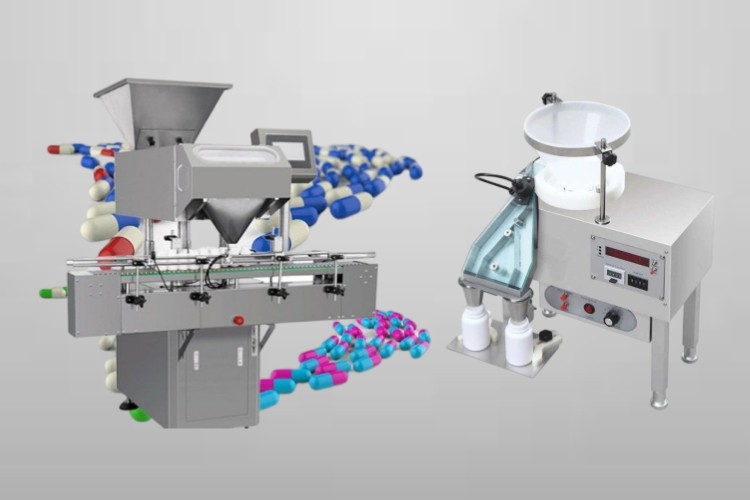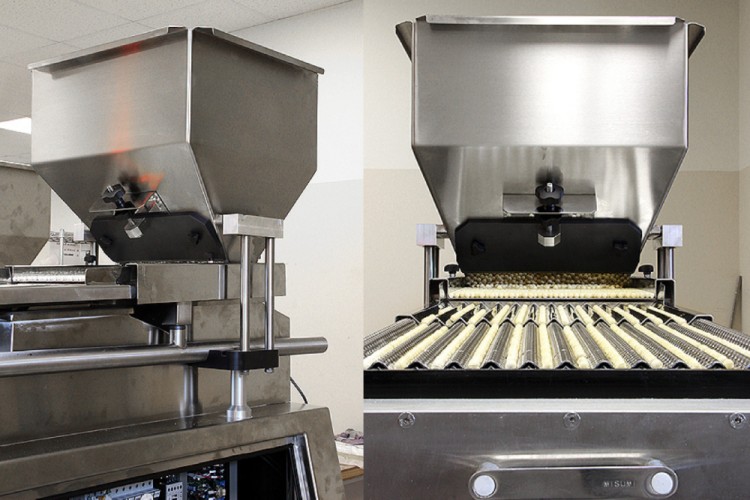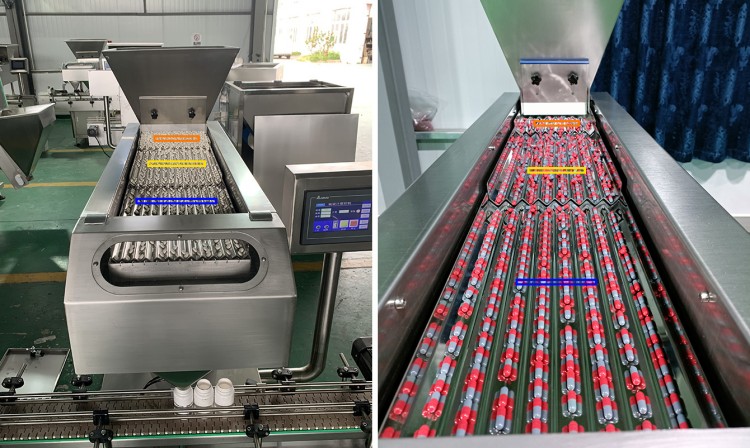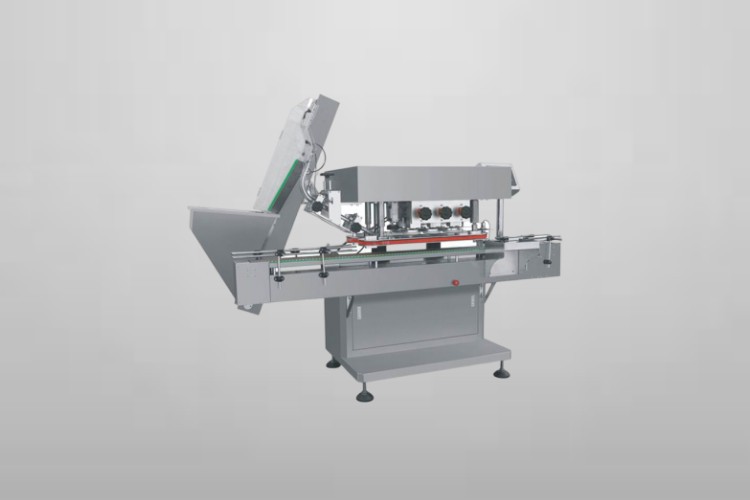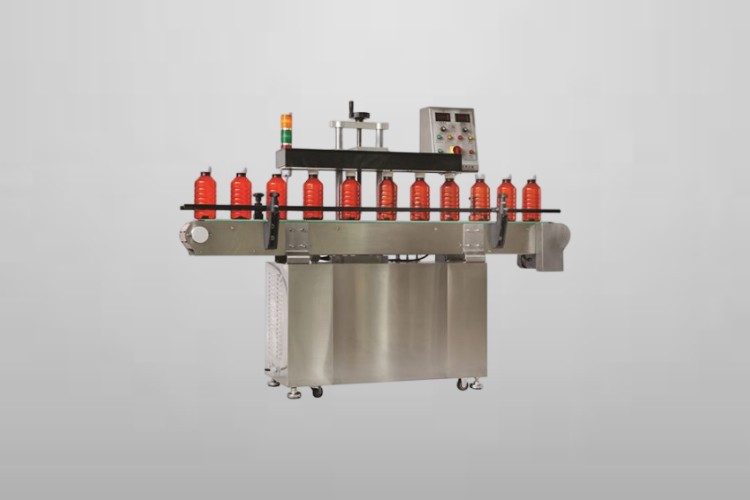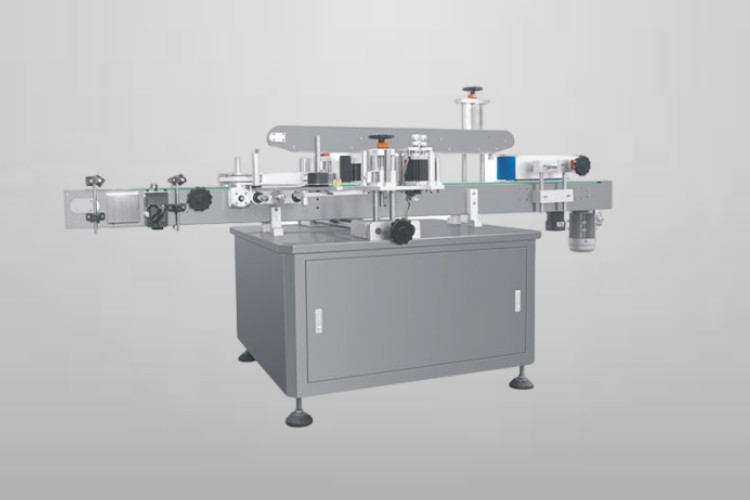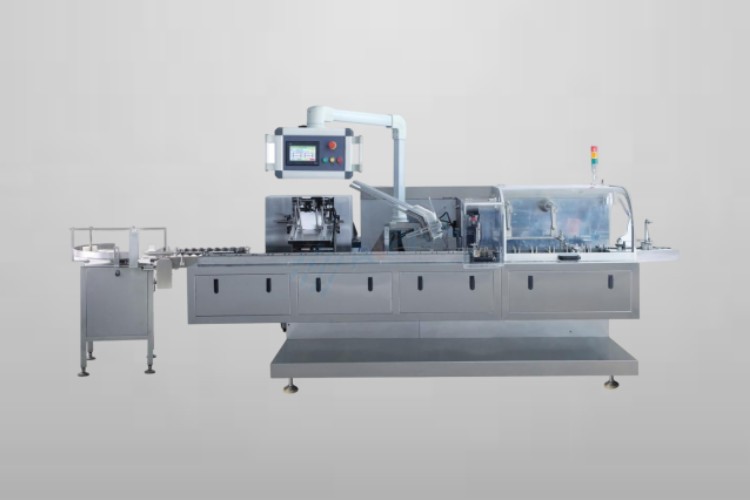Automatic Pill Counter: The Complete Buying Guide In 2024
In today’s fast-paced world, taking medications on time has become a challenging task for many. An automatic pill counter can make things a lot easier and help ensure that you never miss a dose of your medication again. With so many different types and models available, choosing the right automatic pill counter can be overwhelming.
Automatic Pill Counter: The Complete Buying Guide In 2024, will take you through everything you need to know about automatic pill counters and help you choose the perfect one for your needs. We will cover the various types of pill counters available, how they work, and what features to look for when making your purchase.
Some questions that we will cover in this guide include:
1.What is an automatic pill counter?
An automatic pill counter is a machine designed to count and sort medication pills or capsules quickly and accurately. It is commonly used in pharmacies, hospitals, and other healthcare facilities to improve efficiency and reduce human error.
The machine works by using sensors to detect the size, shape, and color of the pills, and then sorting and counting them into individual compartments. Some automatic pill counters can also identify pills by their markings or imprints using image recognition technology.
2.What are the advantages of utilizing an automatic pill counter, and why is it worthwhile?
Here are some specific benefits of using an automatic pill counter:
Increased Efficiency:
An automatic pill counter can count pills much faster than a human can, making it an ideal solution for pharmacies, hospitals, and other healthcare facilities where there is a high volume of pills to be counted.
Improved Accuracy:

Manual counting of pills can result in errors due to fatigue, distractions, or miscounting. An automatic pill counter eliminates the risk of such errors, providing more accurate counts and reducing the risk of medication errors.
Cost Saving:
Automating the process of pill counting can save time and reduce labor costs, enabling healthcare providers to focus on other tasks. Additionally, the accuracy of an automatic pill counter can help reduce waste and prevent overstocking of medications, which can save money in the long run.
3.What are the applications of automatic pill counter?
Automatic pill counters are devices that use various technologies such as image processing, sensors, and artificial intelligence algorithms to count and sort medications quickly and accurately. The applications of automatic pill counters are numerous, particularly in industries where accurate medication dispensing is critical.
Here are some of the applications of automatic pill counters:
Pharmaceutical Industry:
In the pharmaceutical industry, automatic pill counters are used to count and sort medications into individual doses for packaging and labeling. These devices can handle large volumes of pills quickly and accurately, reducing the risk of errors in the medication dispensing process.
Hospitals and Healthcare Facilities:
In hospitals and healthcare facilities, automatic pill counters are used to streamline medication dispensing processes, allowing healthcare professionals to spend more time on patient care.
These devices can count and sort medications based on dosage and time of administration, reducing the risk of medication errors and improving patient safety.
Retail Pharmacies:
Automatic pill counters are commonly used in retail pharmacies to fill prescriptions quickly and accurately. These devices can count and sort medications based on dosage and package them into individual doses for patients.
Research and Development:
In research and development, automatic pill counters can be used to accurately measure and dispense medications for clinical trials and research studies. These devices can count and sort medications quickly and accurately, reducing the risk of errors in the research process.
In summary, automatic pill counters are valuable tools in industries where accurate medication dispensing is critical. They can help streamline processes, reduce the risk of errors, and improve patient safety in healthcare facilities and pharmacies. Additionally, they can be used in research and development to accurately measure and dispense medications.
4.What are the different types of pill counters available in the market?
Manual Pill Counter
A manual pill counter is a simple device used in pharmacies and hospitals to count medications or pills. This machine is operated by hand and does not require any external power source or electricity.
It typically consists of a tray that holds the pills and a hand-operated mechanism that separates the pills and counts them one by one. Manual pill counters are cost-effective, portable, and easy to use, making them an ideal choice for small pharmacies or healthcare facilities with low-volume pill dispensing needs.
Semi-Automatic Pill Counter
A semi-automatic pill counter is a machine that counts pills or medications automatically, but requires human intervention to initiate the counting process. It typically consists of a hopper that holds the pills and a mechanism that separates and counts them.
Unlike manual pill counters, semi-automatic pill counters are powered by electricity, which enables them to count pills faster and more accurately. Semi-automatic pill counters are commonly used in mid-sized pharmacies and hospitals, where there is a moderate demand for pill dispensing.
Automatic Pill Counter
An automatic pill counter is a high-tech machine that can count thousands of pills per minute with high accuracy. This machine is fully automated and requires no human intervention during the counting process.
It typically consists of a hopper that holds the pills, a mechanism that separates and counts them, and a computer system that controls the entire process. Automatic pill counters are commonly used in large hospitals and pharmaceutical companies where there is a high demand for pill dispensing.
Multi Channel Fully Automatic Pill Counter
The multi-channel fully automatic pill counter is a state-of-the-art device designed to accurately count medication pills using multiple channels. This advanced pill counter is fully automated, meaning it requires minimal operator intervention and can handle large volumes of pills with ease.
Its multi-channel feature allows for simultaneous counting of multiple pill types, making it an efficient tool for pharmacies, hospitals, and drug manufacturers. This pill counter is equipped with advanced sensors and software that ensure accurate and precise pill counting, making it a reliable solution for medication dispensing.
5.What are the major differences between automatic pill counter and semi automatic pill counter?
An automatic pill counter and semi-automatic pill counter are two different types of equipment used to count and sort pills in a pharmacy or medical setting.
Here are some clear differences between the two:
Operation: The main difference between the two types of pill counters is the level of automation. An automatic pill counter is fully automated and counts and sorts pills without any human intervention. On the other hand, a semi-automatic pill counter requires some manual input from an operator.
Accuracy: Automatic pill counters are generally more accurate than semi-automatic pill counters. This is because automatic pill counters use advanced sensors and digital technology to ensure precise counting, while semi-automatic counters require manual input, which may be prone to errors.
Speed: Automatic pill counters are faster than semi-automatic pill counters. An automatic pill counter can count and sort hundreds of pills in a matter of seconds, while a semi-automatic pill counter may require more time to count the same amount of pills.
Cost: Automatic pill counters are generally more expensive than semi-automatic pill counters. This is because automatic pill counters use more advanced technology and require less manual input.
In summary, while both automatic pill counters and semi-automatic pill counters serve the same purpose of counting and sorting pills, the level of automation, accuracy, speed, cost, and maintenance required differ between the two types of equipment. Ultimately, the choice between the two will depend on the specific needs and budget of the pharmacy or medical setting.
6.What are the fundamental components that make up an automatic pill counter?
An automatic pill counter typically consists of the following fundamental components:
Hopper:
The hopper is the container where the pills are stored before they are counted. It feeds pills into the counting mechanism through a funnel or tube.
Feeding system:
The feeding system of an automatic pill counter is a critical component that ensures accurate and efficient delivery of pills into the counting unit. It contains a hopper and a vibrating feeder.
It is designed to handle a wide range of pill sizes and shapes and uses various mechanisms, such as gravity or vibration, to move the pills along the system.
Vibrating feeder:
The vibrating feeder is a component of the feeding system of an automatic pill counter that uses vibration to ensure consistent movement of pills. It is designed to prevent clogging or jamming in the system and can handle a wide range of pill sizes and shapes.
The vibrating feeder is calibrated to provide just the right amount of vibration to move pills along the system without damaging them.
Vibration Governor:
This component of an automatic pill counter helps regulate the intensity and frequency of vibrations used to move pills through the counting mechanism. It ensures that the vibrations are consistent and accurate, preventing errors in pill counting.
Electric Eye:
This component uses optical sensors to detect the presence of pills as they pass through the counting mechanism. It sends a signal to the counting mechanism to keep track of the number of pills that have passed.
Bottle Height Modulator:
This component adjusts the height of the bottle being filled with pills. It ensures that the pills are dispensed at the correct height to prevent spillage or errors in counting. It also allows the machine to accommodate bottles of different sizes.
Control unit:
The control unit is the central processing unit of the automatic pill counter. It contains software that programs and monitors the entire pill counting process, from the feeding system to the counting unit.
It may also have features like touchscreen displays and wireless connectivity for ease of use.
Cabinet:
The cabinet is the outermost casing of the automatic pill counter, designed to provide a safe and organized environment for pill counting. It may be made of durable materials like stainless steel or plastic and feature locking mechanisms to ensure that only authorized personnel can access the system.
Counting Unit:
The counting unit of an automatic pill counter is a highly precise mechanism that uses advanced technology to count pills. It may use methods like infrared detection or mechanical sensors to ensure accuracy, and can count multiple pills simultaneously.
7.How does an automatic pill counter work?
The working principles of an automatic pill counter involve the use of sensors, software, and mechanical mechanisms to accurately count and dispense pills.
The process typically include the following steps:
Preparation: The pills to be counted are first sorted and prepared for counting. The pills are usually poured into a tray or container that is designed to hold them in a single layer.
Detection: The pill counter uses a sensor or camera to detect the pills in the tray. This can be done in several ways, such as using a weight sensor or an optical sensor that detects the shape or color of the pills.
Counting: Once the pills are detected, the pill counter uses software to count the pills in the tray. The software may use algorithms to differentiate between different types of pills and to exclude any debris or foreign objects in the tray.
Dispensing: After the pills are counted, the pill counter dispenses them into a container, such as a bottle or blister pack. This can be done using a motorized mechanism or a gravity-fed system.
Verification: Finally, the pill counter verifies the accuracy of the count by weighing the dispensed pills or by using a camera to take a picture of the pills in the container. Any discrepancies in the count are usually corrected automatically.
8.What products can be counted by the automatic pill counter?
An automatic pill counter is designed to count various types of pills accurately and efficiently.
The products that can be counted by the automatic pill counter include:
Round pills: These are the most common type of pills, and they have a circular shape.
Oval pills: These pills are shaped like an ellipse and can be counted by an automatic pill counter.
Capsules: Capsules are small containers made of gelatin, and they can be filled with liquid, powder, or small tablets. Automatic pill counters can accurately count the number of capsules in a bottle.
Softgels: Softgels are similar to capsules, but they are made of a different type of gelatin that is more flexible. An automatic pill counter can count softgels just like capsules.
Tablets: Tablets are small, flat, and often have a round or oval shape. They can be easily counted by an automatic pill counter.
Caplets: Caplets are similar to tablets, but they have a longer, more oval shape. Automatic pill counters can count caplets just like tablets.
Lozenges: Lozenges are small, flat tablets that dissolve slowly in the mouth. They can be counted by an automatic pill counter.
Candy-like pills: Some medications are designed to look and taste like candy to make them easier to take. Automatic pill counters can count these pills just like any other pill.
9.How to troubleshoot common problems of automatic pill counter?
Like any other electronic device, an automatic pill counter can encounter problems from time to time. In this article, we will discuss some of the common problems associated with automatic pill counters and how to troubleshoot them.
Inaccurate Counting:
One of the most common problems with an automatic pill counter is inaccurate counting. This can be caused by a variety of factors such as improper calibration, a dirty sensor or improper loading of the pill tray.
To fix this problem, the first thing to do is to recalibrate the machine following the manufacturer’s instructions. If this does not work, check the sensor to ensure it is clean and clear of any debris. Also, ensure that the pills are loaded properly into the tray.
Jammed Machine:
Another common problem with an automatic pill counter is a jammed machine. This can occur if a foreign object such as a broken pill or debris gets stuck inside the machine.
To fix this problem, turn off the machine and unplug it. Check the tray and remove any foreign objects or debris. If the problem persists, consult the manufacturer or a qualified technician.
Error Messages:
Automatic pill counters may display error messages when there is a problem. These error messages may include “Low Battery,” “Out of Range,” or “No Pills Detected.” To fix this problem, refer to the user manual to identify the error message and follow the instructions provided.
10.What other equipment are needed to form a complete automatic pill counter line?
Capping Machine:
A capping machine is an important component of the automatic pill counter production line. It is a specialized machine that is used to tightly seal the caps onto the pill bottles. The machine can be fully automated, semi-automated or manual.
With its advanced automation capabilities, the capping machine seamlessly integrates with the rest of the pill counting line, allowing for rapid and seamless production.
Induction Sealing Machine:
Induction sealing machines are used to seal the cap onto the pill bottles with a foil liner. Induction sealing machines are critical for the automatic pill counter production line because they ensure a tight seal on the bottle, which prevents any contamination of the pills inside.
Labeling Machine:
The labeling machine is an essential component of the automatic pill counter production line. Its primary function is to apply labels onto the pill bottles with all necessary information.
The labeling process is critical because it ensures that the pills are properly labeled and identified, which helps in tracking and monitoring their use.
Cartoning Machine:
A cartoning machine is a critical component of the automatic pill counter production line. It is used to pack the labeled bottles into cartons for shipment. The cartoning process is automated, and the machine can pack a large number of bottles into cartons quickly and efficiently.
The cartoning machine is an important component of the production line because it ensures that the pills are properly packed and ready for distribution.
11.What are some factors buyers should be aware of when purchasing the automatic pill counter?
When purchasing an automatic pill counter, buyers should consider the following factors:
Accuracy:
The accuracy of the pill counter is the most important factor to consider. The buyer should look for a counter that has a high level of accuracy to ensure that the right amount of medication is dispensed.
Capacity: The capacity of the pill counter should be considered based on the needs of the user. If the user needs to count a large number of pills, then a counter with a higher capacity should be considered.
Ease of use: The buyer should look for a pill counter that is easy to use, with clear instructions and a user-friendly interface.
Durability: The durability of the pill counter is also important. The buyer should look for a pill counter that is made of high-quality materials and can withstand frequent use.
Size and portability: The size and portability of the pill counter should be considered based on the user’s needs. If the user needs to take the counter with them while traveling, then a portable option is necessary.
Cost: The cost of the pill counter should also be considered. Buyers should look for a counter that fits their budget while still meeting their needs.
Overall, buyers should take their time to research different options and consider these factors to ensure they choose an automatic pill counter that meets their needs and is of high quality.
Conclusion
In conclusion, an automatic pill counter can be a valuable tool for anyone who needs to regularly take multiple medications. When choosing an automatic pill counter, it is important to consider the above mentioned factors. With the right automatic pill counter, you can enjoy greater peace of mind knowing that you are taking the right medications in the right amounts at the right times. So why not invest in an automatic pill counter today and take control of your medication management with ease and convenience!
Don't forget to share this post!
CONTACT US
Tell us your raw material and project budget to get quotations within 24 hours.
WhatsApp Us: +86 181 7101 8586
The Buyer's Guide
